Phoenix chickens are birds that molt each year or every other year. Molting is when chickens lose feathers and regrow them. This process usually occurs when days get shorter. Chickens stop laying eggs and build their nutrients during molt.
History of Phoenix Chickens
The Phoenix chicken breed was created from a crossbreed of Japanese birds. Hugo du Roi is given the credit of creating the Phoenix chicken. He created the Phoenix breed. The exact date of creation is unknown, but writers suggest it was in the nineteenth century.
To create the breed, Hugo du Roi cross mated Japanese long-tailed birds with birds of other breeds. The other breeds included; Malay, Old English Game, Yokohama, Combatant de Bruges, Kruper, Leghorn, Modern Game and Rameisoher.
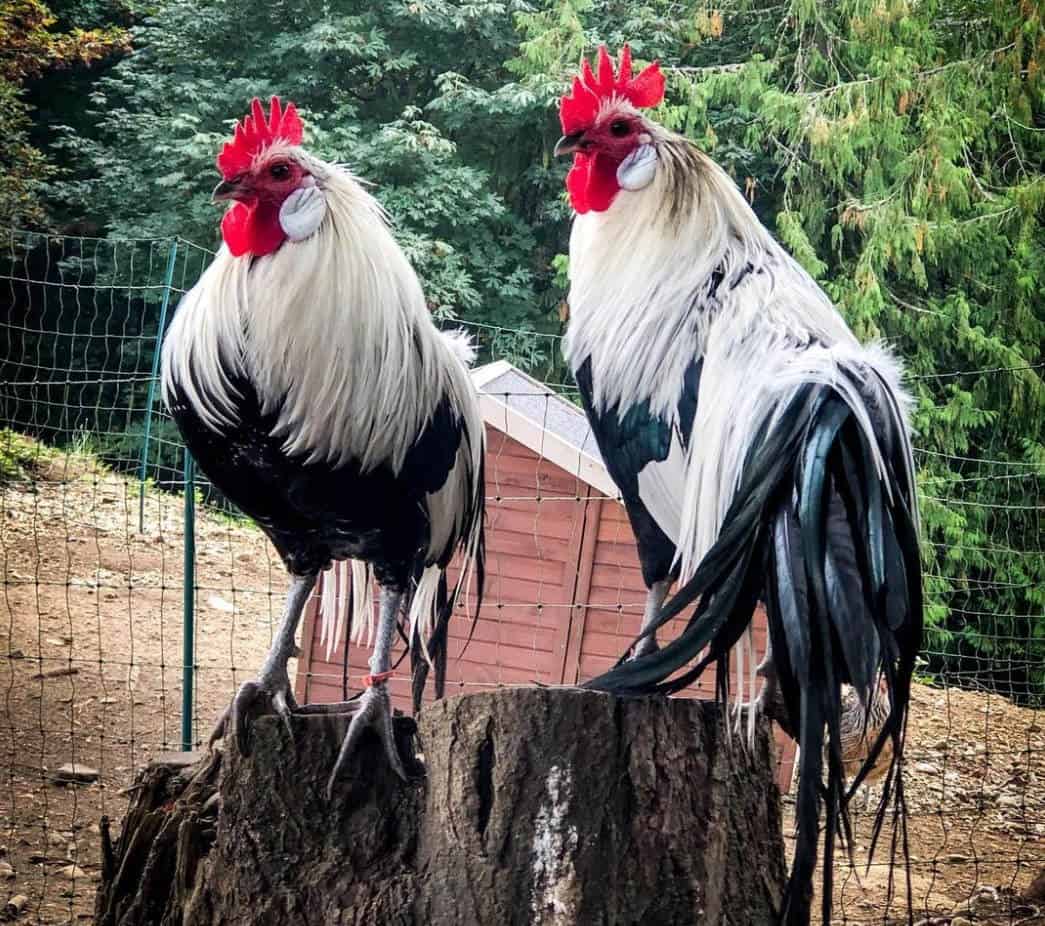
Because of the diversity in crossbreeding, there were different varieties of the Phoenix breed. Breeders of chickens accurately describe the colors and patterns of chicken breeds and varieties.
- In 1965, the American Poultry Association Standard of Perfection accepted the silver variety of the Phoenix breed.
- The gold variety was accepted in 1983.
- Most recently in 2018, the Black-breasted red was recognized by the association.
The American Standard of Perfection is the official breed standard for the poultry fancy in North America. It was first published in 1874. In 2012, the Phoenix breed was first accepted in the Australia Poultry Standard with any color standardized in Old English Game.
Phoenix Chicken Breed Standard & Appearance
The Phoenix chicken breed is typically considered a show type of chicken breed. Ornamental chickens are referred to as show chicken breeds. They are chickens that are raised because of their fancy appearance.
The production of meat and eggs is secondary in ornamental chickens. These breeds are usually more high-maintenance and more expensive than other breeds of chickens.
There is a variety of breeds of Long-tail chickens. The Phoenix chicken was originated in Germany, but it also has Japanese descent. The Phoenix breed has been found in the U.S. since before 1924.
Chickens can be of four types
- English
- Asiatic
- Mediterranean
- American
The Phoenix breed is a Standard Class: English / Bantam, Single Comb, Clean Legged chicken. A Bantam is a chicken of a smaller breed, the male of which is noted for aggression. The size for a Phoenix breeds Standard Male is 5.5 pounds and a Standard Female is 4 pounds. The Bantam Male is 25 ounces and the Bantam Female is 24 ounces.
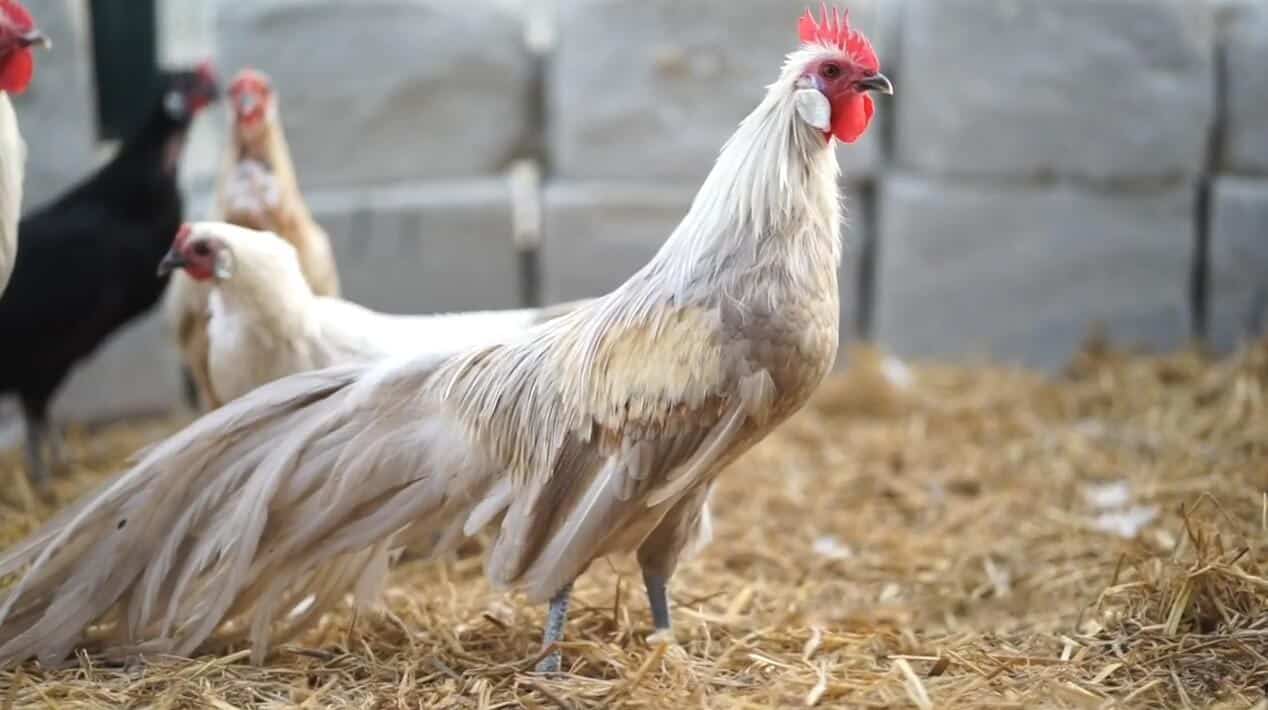
Combs, wattles, and earlobes are all unique on chickens. The Phoenix chicken has a single comb with five defined upright points. The comb on Phoenix males is medium size and small in females.
The comb is a bright red color. The wattles are bright red, medium size in males and small in females. The earlobes on Phoenix chickens are oval and medium size in both males and females. The earlobes are white.
The Phoenix’s tail is impressive and can reach several feet in length. The special qualities of the Phoenix breed are that the chickens are typically small, ornamental birds, with long tails.
-
- The eyes are dark reddish brown,
- The toes are light to dark blue.
- Their feet and shanks are smooth and clean.
- The Phoenix comes in multiple color varieties including gold, silver, black, golden-duckwing and silver-duckwing.
What climate does the Phoenix chicken prefer? This breed prefers warmer climates as opposed to colder climates.
The Tail of the Phoenix Chicken
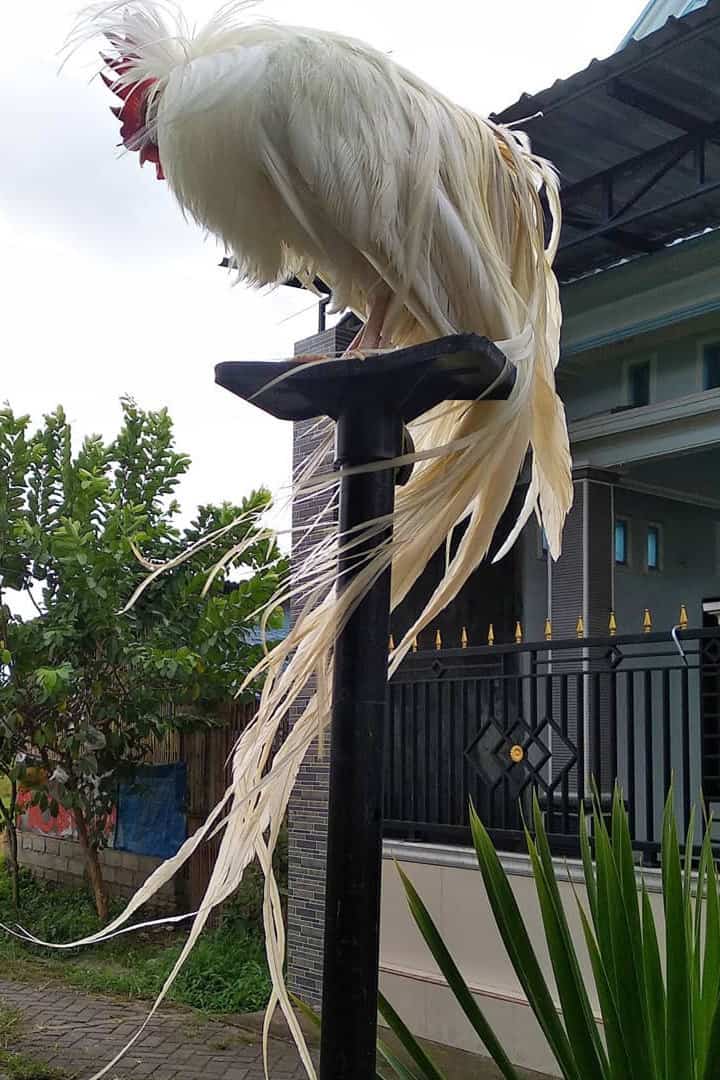
One of the most extravagant aspects of the Phoenix breed is its impressive tails. Where did such an elegant tail come from? Remember, the Phoenix chicken is a crossbreed of multiple other breeds. One of the ancestors of the Phoenix chicken is the Onagadori chicken.
The Onagadori is a historic Japanese breed of chicken. This breed is characterized by an exceptionally long tail. It was bred in Southern Japan in the seventeenth century. This bird was designated as a Japanese National Natural Treasurer in 1952. The Onagadori is a close ancestor of the German Phoenix breed.
The tail of the Onagadori exceeds 1.5 meters and can reach up to 12 meters. Although the Phoenix tail is not as long as its ancestors, it still possesses the characteristic of a long beautiful tail. The Onagadori breed has a unique gene that does not allow them to molt, which is why they can grow their tails so long.
Due to crossbreeding with other European chicken breeds, the Phoenix does not have this full gene capability. The Phoenix inherited the long tail characteristic and they molt far less than the average chicken.
Personality and Temperament

The personality and temperament of Phoenix chickens are typically not friendly. They are generally docile, but not the friendliest birds. These birds are more likely to be friendlier if you raised them by hand. The Phoenix chicken breed tends to be a loner and usually keeps to themselves.
The personality of the bird can also be affected by the living arrangements. Living accommodations’ for these birds need to take into consideration they need space for their feathers to stay dry and be able to grow.
There is a requirement for special housing or cages and high perches for their long nails. This is an active breed with great flight skills. The Phoenix breed is good for free range system and they are excellent foragers. Despite their large tails, the breed does well in confinement.
Phoenix Chicken Egg Laying
Phoenix hens do not lay many eggs. They lay around 45 tinted eggs per year but can yield anywhere from 40-156 eggs per year. The Phoenix hen can lay around three white, creamy, or light brown eggs per week. Unfortunately, this number can be as low as one egg per week.
The hens make excellent mothers because they can also go broody. The Phoenix chickens are not large, and they produce very small eggs. Remember, the Phoenix chicken is an ornamental breed and not a breed that is expected to produce meat and large quantities of eggs.
Health Issues
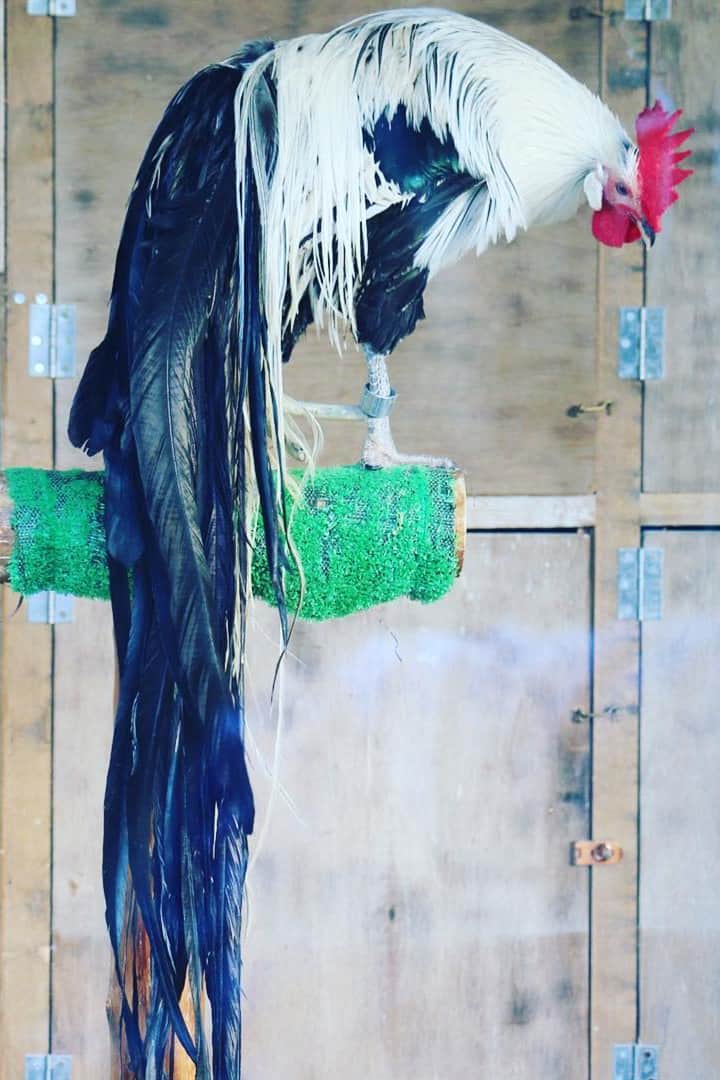
Phoenix chickens are no different from other chicken breeds when it comes to health issues. Chickens commonly suffer from a variety of diseases and health conditions.
The healthiest Phoenix chickens are the ones that have regular access to optimal nutrients. Supplements and additives are highly effective at supporting healthy functions and boosting the immune system of your Phoenix chicken.
The most common health problems that may occur in Phoenix chickens can be eliminated or avoided by improving their diet. Common diseases that can be seen in Phoenix chickens include:
- Fowl Cholera – is a chronic disease caused by Pasteurella Multocida that can affect the joints, wattles, sinuses and other tissues
- Coccidiosis – a parasitic disease caused by Coccidian protozoa that live in and damages a specific region of the gut in Phoenix chickens
- Fowl Pox/Avian Pox – this is a highly contagious disease. Chickens who contract Avian Pox can experience two different types of conditions, dry pox or wet pox
There are a number of diseases and health issues chickens can contract. The best way to mitigate health issues is to keep the Phoenix chicken healthy with good quality nutrients.
Tips for Raising Phoenix Chickens
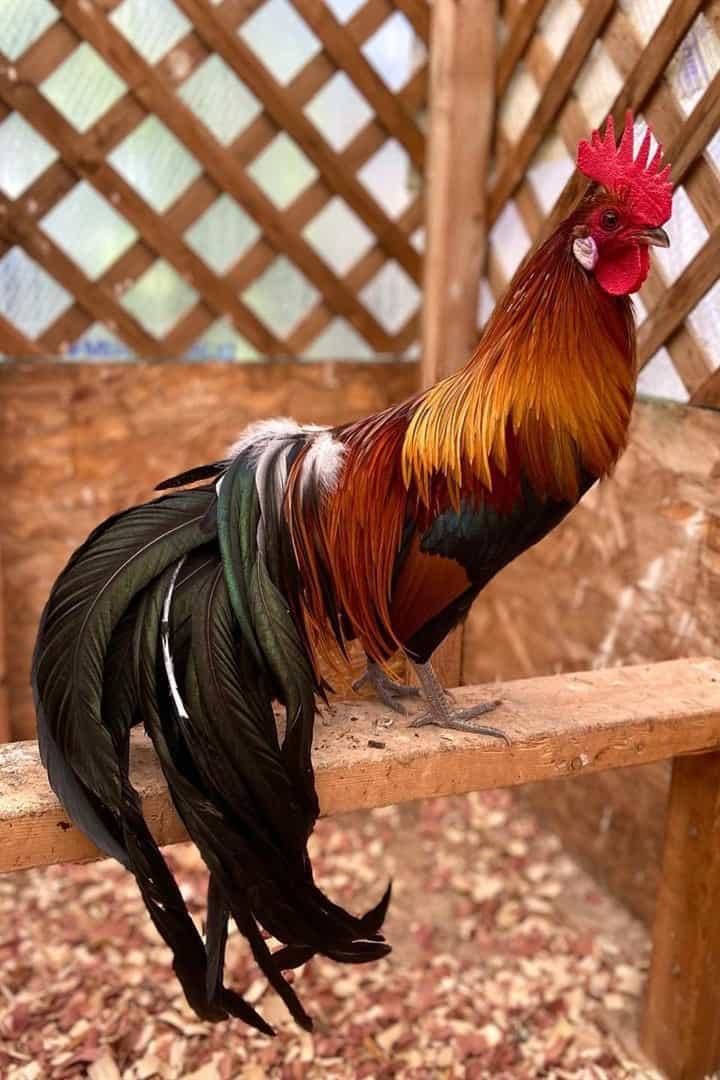
Phoenix chicken farming is popular, especially in areas where this breed is readily available. Below, is a list of tips on raising Phoenix chickens:
- First, choose very good quality, active, and disease-free Phoenix chickens.
- Healthy birds are key.
So, how can you tell if your Phoenix chicken is healthy? Healthy chicken feathers should look strong, glossy, and sleek unless they are molting. Your chicken may be sick if you notice these symptoms with their comb: limp, pale, or purple/blue discoloring.
Where will you house the Phoenix chicken?

- Stable, safe, and secure housing is important for raising Phoenix chickens
- A great housing environment can help the Phoenix breed stay health
- You want to protect your chickens from bad weather and predators
- If you can’t let your chickens range free, the confinement factor is important for a happy, flock.
- Remember, the Phoenix chicken can grow long tails and may need long perches.
- Noise level really matters if you do not reside in the country.
- The type of house you build for your Phoenix chicken will vary based on your budget.
- You can buy a coop for your chickens at an affordable price. You can use materials that are readily available to you to design the perfect chicken coop.
- Ensure that the house is secure and comfortable for the bird
Age of the Phoenix chicken
- Some sources advise against mixing the ages of chickens. It is recommended to have chickens similar in age.
- You can purchase younger chicks or adult birds. This is dependent on the area you live in and what is available.
- Mature birds are sold at higher prices
- Younger chicks are always much cheaper to purchase
- When raising Phoenix chickens, it is recommended to start with young chicks
Flying phoenix with its ladies
Summary
Overall, the characteristics of a Phoenix chicken are that it is a large fowl with Bantam available. The temperament is docile, but broody at times. The breed prefers a warm climate. It is high-maintenance and best in part-time confinement. On average, the Phoenix yields 40-156 eggs per year.


Joseph Hudson has been raising chickens for over 15 years. In 2018, he completed the Agriculture & Natural Resources program at Mt. San Antonio College. He currently raises over 1400 chickens on his 7.5-hectare farm. He keeps sharing his experience on raising healthy and happy chickens on Chicken Scratch The Foundry.









I like to buy long tail white and silver phoenix my email [email protected]
Hi I m from nepal I want to buy egg all types off fency chicken by cargo it’s possible or not
Yes please inbox me on Facebook.
I want to buy adult pairs
Me from Pakistan